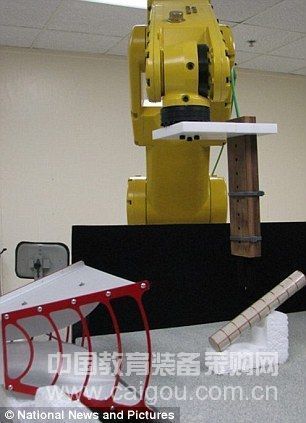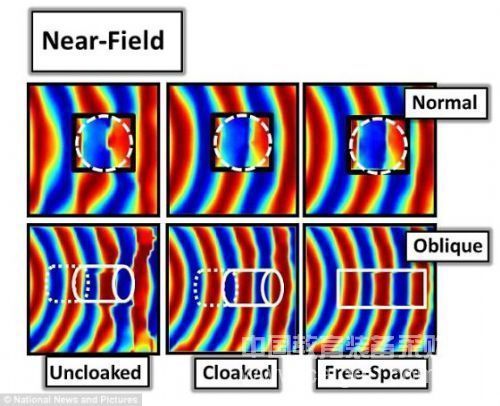The cylinder used by scientists at the University of Texas in the development of an invisible cloak is still visible when taking pictures.

During the test, the scientist let the microwave pass through the cylinder and then moved the measuring antenna around the object.

When the cylinder is invisible, the position of the microwave (red and blue) is almost the same as when there is no cylinder.
Beijing time, April 1, according to foreign media reports, scientists at the University of Texas in the United States have invented an ultra-thin material that can make objects invisible to microwaves. With the advent of this new material, the dream of developing an invisible cloak has further penetrated into reality. Scientists have always used very bulky metamaterials when developing stealth cloaks. This is an obvious flaw for those who are committed to copying the magical fabric of the Harry Potter type.
Now, American scientists have developed a cloak that is only a few microns thick, allowing three-dimensional objects to be invisible to microwaves in their natural environment, regardless of the direction and position of the observer. During the research, they used a new type of ultra-thin layer called "metascreen". The super screen cloak is made by attaching copper tape to a soft polycarbonate film, which can make an 18 cm cylinder invisible to microwaves. The invisible effect is best when the microwave frequency is at 3.6 GHz and relatively moderate bandwidth. According to the researchers' predictions, weird and irregular objects can also be hidden in the same way.
When beams such as sound waves, light waves, X-rays, or microwaves bounce off the surface of the object, the object is detected. The reason we can see an object is because the light reflected from its surface enters our eyes, which can process this information. Previous cloak studies have used metamaterials to bend the beam around the object. The method used by the University of Texas scientists is what they call "coverage stealth", using an ultra-thin metal ultra-screen to cancel the beam scattered from the surface of the object covered by the "cloak".
Professor Andrea-Aru, co-author of the research paper, said: "The scattered field of the cloak and the beam scattered from the surface of the object cancel each other out, and the overall effect is transparent and invisible, no matter what angle the observer observes. The advantages include consistency, ease of manufacturing, and improved bandwidth. Our research found that you do n’t need to use bulky metamaterials to counteract scattering from objects. A simple mesh surface with a shape that is consistent with the object may be an effective approach. It is even better than bulky metamaterials. "
In 2012, the same group of researchers succeeded in making a three-dimensional object invisible for the first time. According to their research paper published in the Journal of New Physics, they used a method called "plasma photon stealth", using bulky materials to counteract beam scattering. The current challenge for researchers is how to use cover stealth technology to make objects invisible under visible light conditions. Alu said: "Theoretically, this technology can make objects invisible under visible light conditions. The effect of super screens at visible light frequencies exceeds that of metamaterials. This technology allows us to move further towards the development of practical invisibility cloaks. Method The size of invisible objects can be scaled up with the operating wavelength. At various optical frequencies, we can effectively prevent the scattering beams of micron-level objects. According to our assumptions, covering cloaks have other exciting applications. , Such as the development of optical nano-tags and nano-switches and non-invasive sensing devices, making biomedical and optical instruments beneficiaries. "
PVA products are made of high-quality materials, whether used wet or dry. Kitchen specific dishwashing sponges have magical powers that can immediately absorb debris, ensuring hygiene and quick drying. This product will not trap food residue and oil stains in crevices. It can be easily cleaned with just one rinse, and is long-lasting, non stick, absorbent, and stain resistant.
PVA product, Poly Vinyl Alcohol Material, Biodegradable materials
NINGBO JENNY IMPORT & EXPORT CO.,LTD , https://www.jennyclothing.com